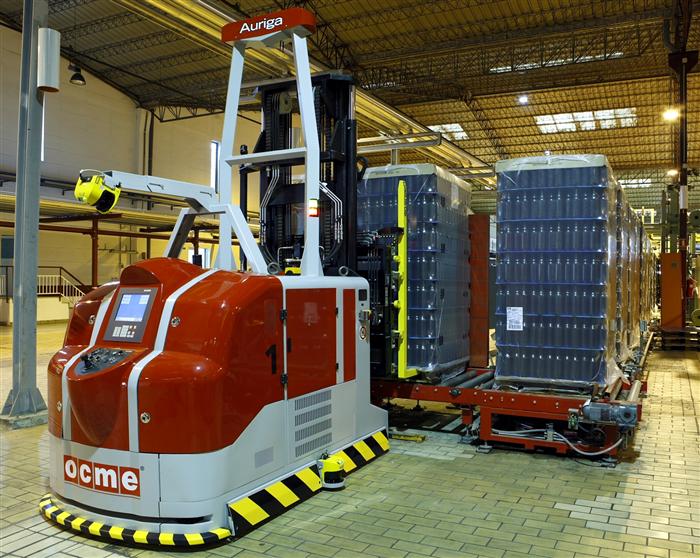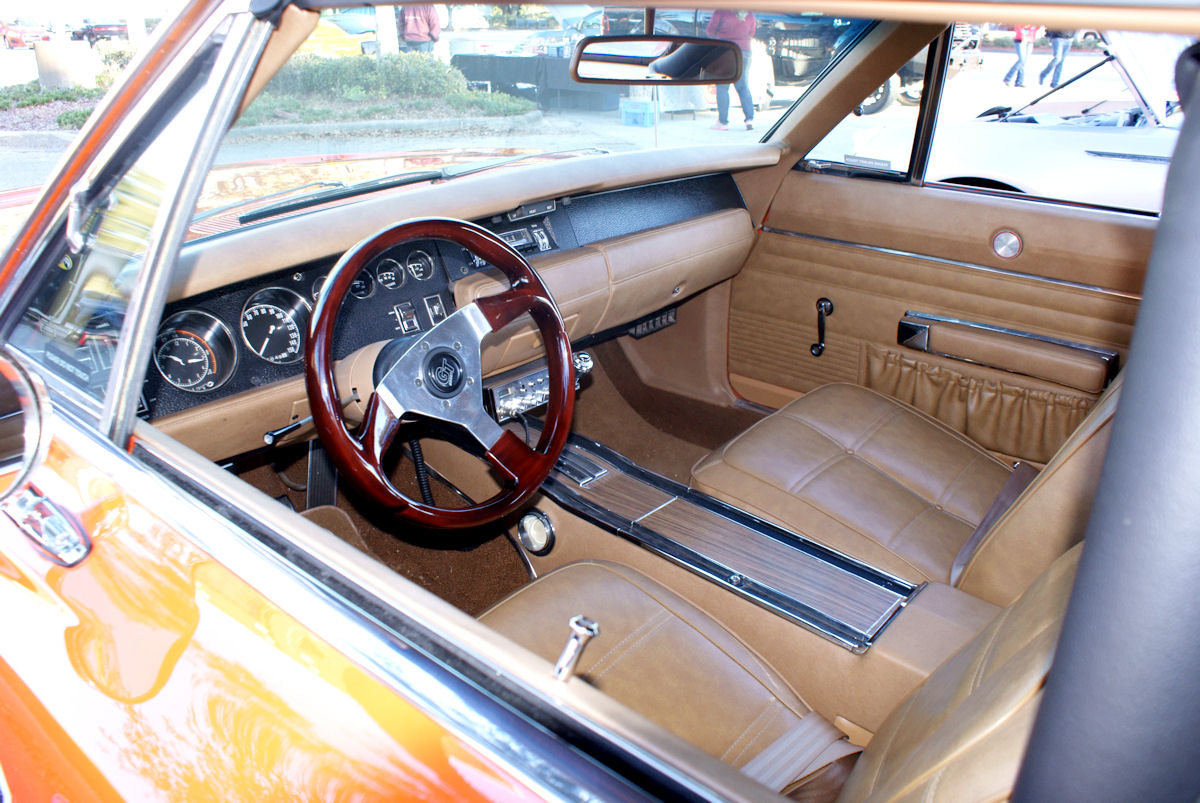Forklifts and their operators are often viewed as the lifeblood of many industrial spaces. For several decades’ forklifts have been a common sight in most warehouses and industrial spaces. They have always been relied upon as strong workhorses, moving materials quickly around a variety of sites. From unloading delivery trucks to moving goods from the production area ready for shipping, forklifts are used in almost every industrial situation. However, the traditional forklifts we know are being transformed with some major changes. The latest developments in artificial intelligence (AI), computer vision, robotics and automation are all contributing to the design of new-self driving forklifts, stackers and pallet trucks. With such drastic changes and new capabilities, many people are wondering whether self-driving forklifts could eventually replace people, by making humans obsolete. This article will provide you with an insight into self-driving forklifts and our predictions for the place they have in our manufacturing future.
What are self-driving forklifts?
Self-driving forklifts are also known as automated guided vehicles (AGVs) and are seen by many as the forklifts of tomorrow. Although AGV technology actually dates back to the 1950s, this new technology is being developed to use a combination of AI and computer vision technology, which enables them to plan safe and efficient routes. These capabilities are leaving the dated AGV technology in the dust, with new self-driving machines expected to take the main stage in manufacturing. They will have the ability to predict and detect movements of humans within the areas they work in, while also communicating with other devices such as roller tracks and warehouse doors. In a similar way to Elon Musk’s self-driving passenger cars, these new forklifts use AI and advanced computer technology to perform tasks which were in the past carried out by human operators. These self-driving forklifts can track and mimic the actions of human workers, which means they can teach themselves how to operate effectively and what they should be doing. This ability enables them to lift, move and stack items in the same way as standard forklifts which are operated by humans. Their futuristic ability to sense the details in the area around them enables them to predict the movements of human workers and other machinery. This means they can calculate the most efficient and safest route around an area while avoiding obstacles. The majority of self-driving forklifts can be operated manually, however, the data which they gather over time means they will soon be able to perform tasks without the need for a human operator.
An increase in automation
There are many industrial spaces which are already moving towards increased levels of automation. As robotics and automation technology develops companies such as Amazon are investing in the latest machines, which can make processes across warehouses quicker and cheaper. It is no surprise that Amazon is making increased efforts to automate its supply chain, with the new robotic capabilities indicating a vast increase in productivity with a reduced need for manual labour. The equipment used by Amazon can interact directly with every system, enabling the technology to control inventory, shipping and production. The robots are able to use scanning technology to receive a customer order, locate and retrieve the correct inventory, move it to the shipping area and update the inventory system. An AGV is then used to move the packed items to a truck ready for delivery. These AGV’s are very similar to self-driving forklifts and have removed the need for many of the traditional forklifts previously used within Amazon warehouses. In a further push for automation, Amazon is now working with robotics firms to access technology to turn their regular forklifts into self-driving machines, which will further reduce the need for humans in the supply chain.
The advantages of self-driving forklifts

The main advantage self-driving forklifts provide is the ability to decrease the size of the workforce. Fewer workers are required to drive forklifts which naturally reduces the requirement for many employees. This results in large savings for many businesses within payroll, taxes, insurance and employee benefits. In most situations, there will still be a requirement for some human workers who perform tasks such as packaging items by hand, especially if the items vary in size or are particularly fragile. Although, as demonstrated by Amazon there is robotic technology available to do this. As the number of employees decreases many of the risks also decrease, making the workplace a safer place to work. It is quite common for workers to injure their backs or necks because of forklift accidents, such as tip-overs and collisions. Even if an accident occurs when two self-driving forklifts crash, it is unlikely to involve any people. Self-driving forklifts will also be able to carry out much of the heavy lifting work, which would previously have created a risk of injury to workers backs. The forklifts could even be used alongside workers to hold pallets of items at the optimum height, resulting in less strain on workers backs. An example of this can be seen in the logistics company DHL, where robots are designed to work alongside works to pick the correct items. These robots are designed to perform repetitive and heavy tasks, which allows workers to focus on tasks which require strategic thinking. According to research by Barclay’s Bank, the market for robots which collaborate with humans is increasing each year, with prices steadily dropping by roughly 4% every year. By reducing accidents and improving efficiency the productivity of the workplace naturally increases. Unlike human forklift operators, self-driving machines will never need lunch breaks, start to feel tired, call in sick, or take holiday days. The ability of machines to work around the clock will result in increased productivity, without the need to pay staff overtime. This increased productivity is also combined with fewer errors when compared to human operated forklifts. Although operators can be well-trained, it is impossible to totally remove the risk of errors in human-operated machines. Self-driving forklifts have the ability to drastically reduce errors when they are correctly programmed, as they know where they need to be and what they need to do. There is a very low risk that an automated forklift will move the wrong items or place inventory in the wrong location.
The disadvantages of self-driving forklifts
Although there are many benefits of the emerging self-driving technology, there are also some concerns surrounding the technology. For example, one of the main advantages of self-driving forklifts is the increased productivity, however, it will take quite a long time for a workplace to see this benefit. It takes time for the human workers to get used to working with the automated machines, with a variety of safety issues and training required to overcome this problem. Self-driving forklifts use state-of-the-art technology, which means there is a large price to pay. If you are a start-up company or have other costs to consider, the price of automation is likely to be too high. The costs will gradually begin to decrease over time, but for now, the technology is unlikely to benefit most small and medium-sized businesses. The businesses which will see the best return from implementing self-driving forklifts will be the larger facilities, so it is unlikely standard forklifts will disappear overnight. The cost associated with investing in self-driving forklifts will also mean that the technology is unlikely to be able to instantly meet changing demands in the workplace. For example, during busy periods it is relatively easy to increase employee numbers quickly, however, purchasing a new self-driving forklift may take time and resources which the business does not have access to. Although, as the technology becomes more readily available it may be possible to hire self-driving forklifts to meet fluctuating demands. As with all new technology, there are likely to be difficulties and bugs to fix, which could be costly to correct. To ensure the new forklifts run smoothly, businesses will need to hire or train workers to maintain and repair the machines. In fact, although Amazon are currently operating warehouses with high levels of automation, they have actually hired increased numbers of employees to cope with the changing demands. This will be in addition to finding a supplier who can provide replacement parts quickly and at a competitive price, as this could have a significant impact on downtime and the levels of production.
Where will self-driving forklifts be used?
We are gradually seeing a shift towards the use of automated forklifts, but there is still a long way to go before they are used throughout warehousing, construction and manufacturing. With self-driving forklifts providing fewer accidents and injuries within the workplace alongside increased productivity we expect an increasing number of industries to begin to invest in self-driving forklifts. So, could self-driving forklifts ever completely replace humans? There are many who share this concern, but we believe there will always be a requirement for humans within environments using forklifts. For example, people will be required to operate standard forklifts, especially in small and medium-sized businesses and also to maintain and control the new self-driving forklifts. Although the traditional role of forklift drivers may change, a human hands-on element will still be required to work with the new machinery. Here at Budget Fork Trucks, we are committed to offering the latest technology to our customers, so that we can meet the demands of every business environment. We can supply everything from counterbalance forklift trucks to electric forklifts, with self-driving technology on its way in the near future. To find out more about any of the forklifts in our range or discuss self-driving technology in more detail, please contact our team today.


